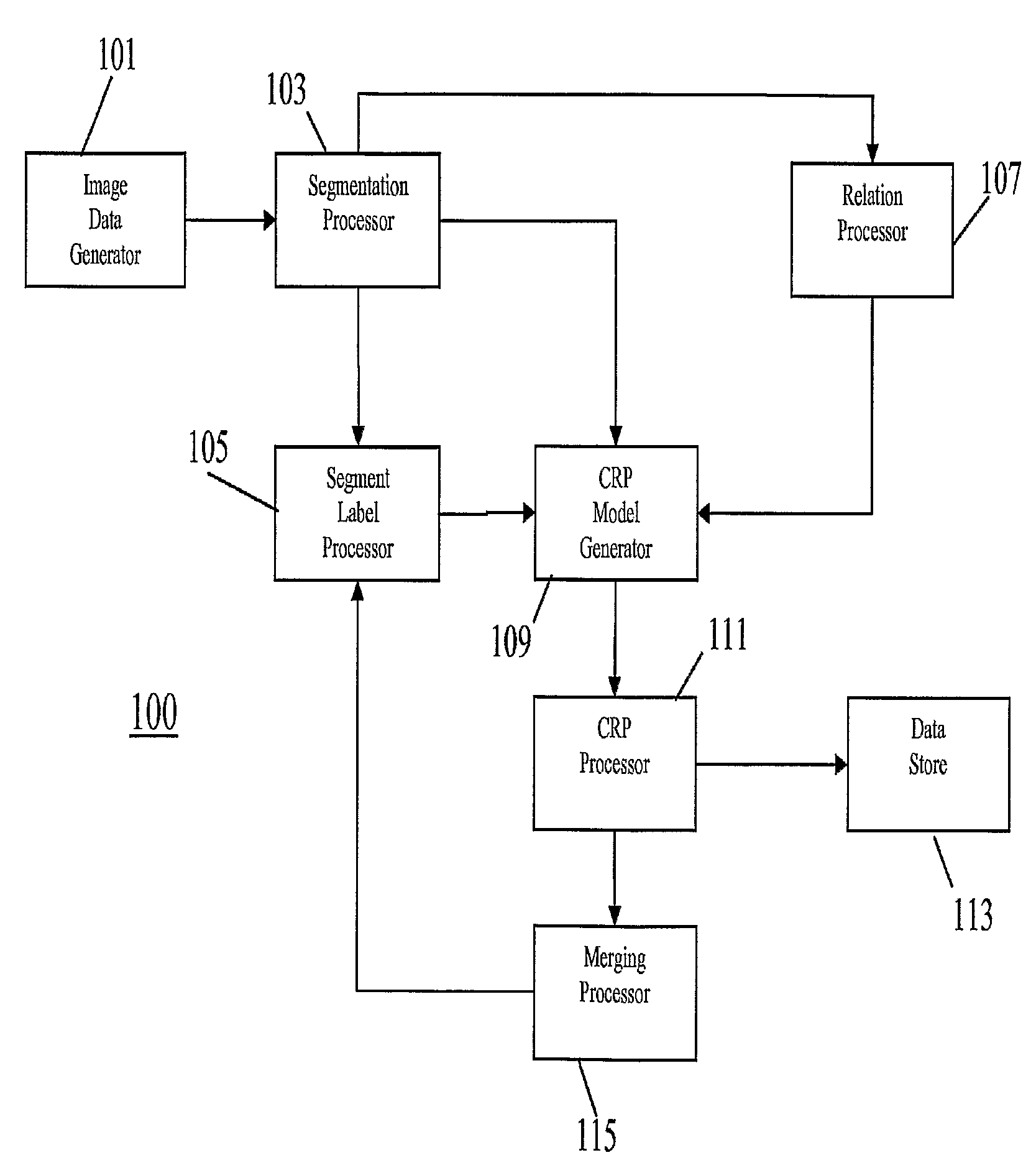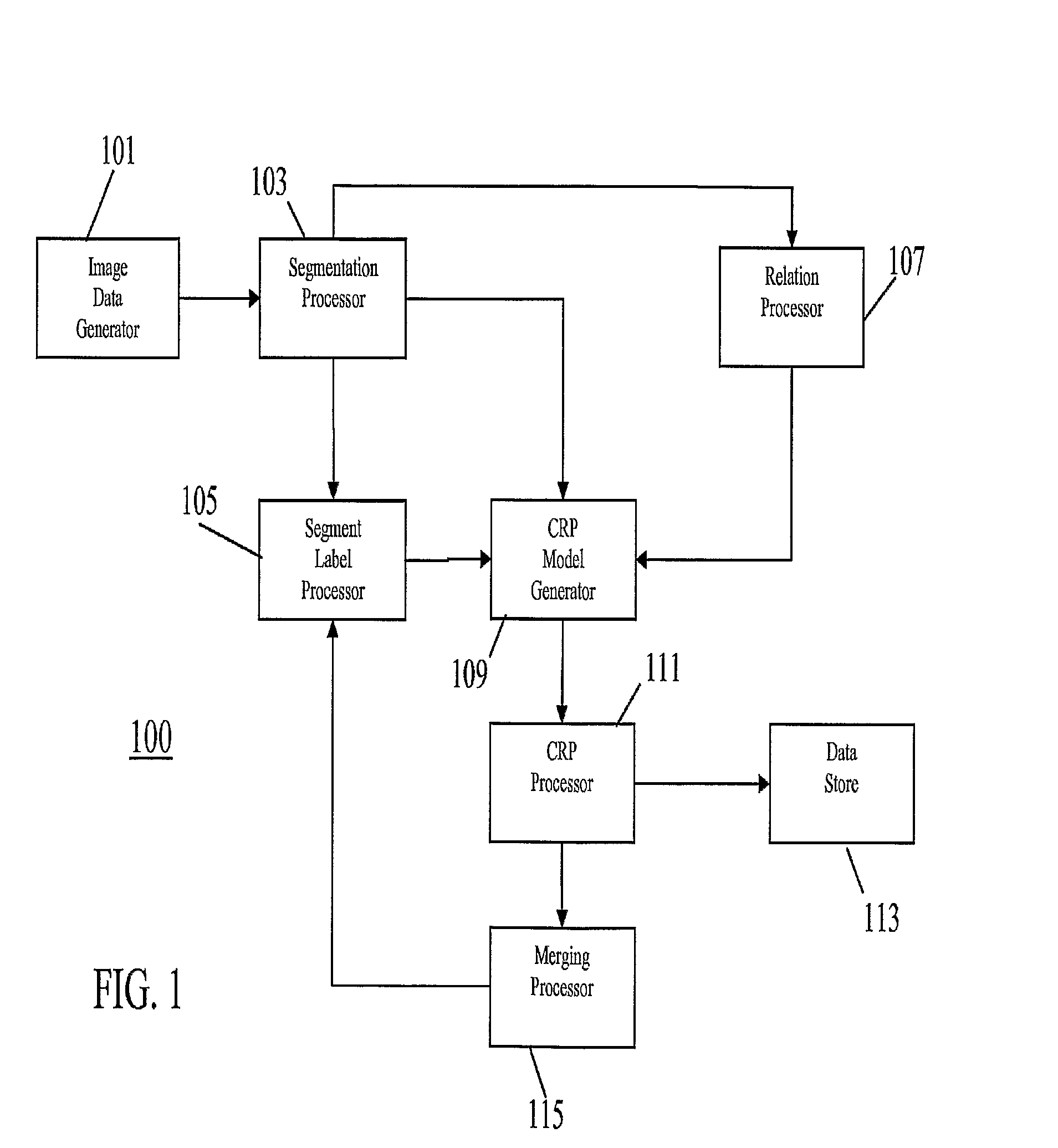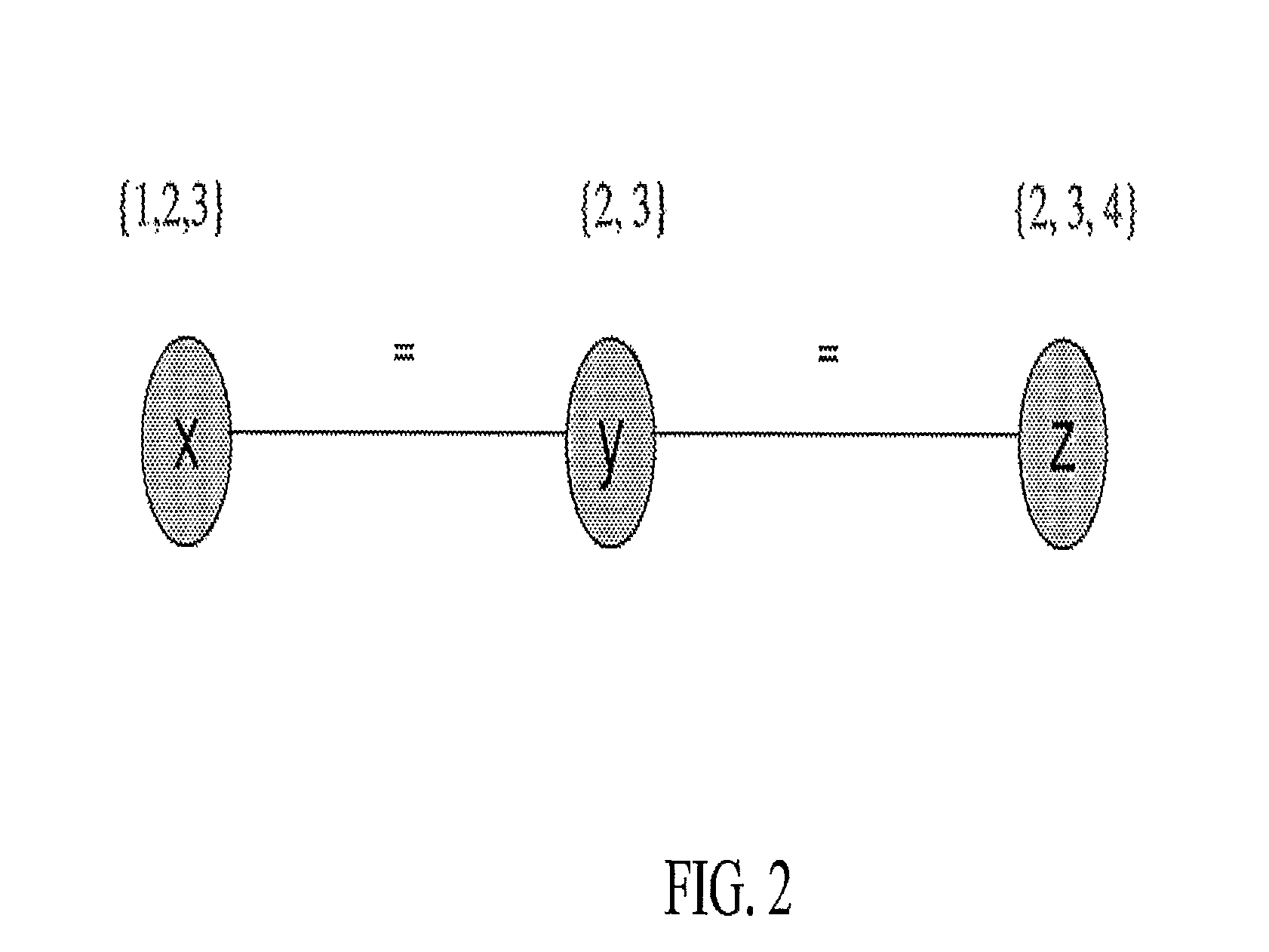Apparatus and Method for Image Labeling
a technology of image labeling and apparatus, applied in the field of apparatus and method for image labelling, can solve the problems of inability to automatically and technically process pictures, inability to achieve automatic and technical processing, and inability to achieve image labeling, etc., to achieve the effect of reducing manual time and effort and improving image labelling
- Summary
- Abstract
- Description
- Claims
- Application Information
AI Technical Summary
Benefits of technology
Problems solved by technology
Method used
Image
Examples
Embodiment Construction
[0058]The following description focuses on an apparatus for labelling digitally encoded images such as digital photos or digitally encoded video images.
[0059]The apparatus is arranged to segment an image to be labelled using low-level image processing algorithms. Each image segment is then categorized e.g. using existing image segment classifiers. The apparatus then uses relationships (and specifically spatial relationships) between the segments to transform the initially labelled image into a constraint satisfaction problem model and a constraint reasoner is then used to remove those labels that do not fit into the spatial context. The possible arrangements of concepts are defined as domain knowledge. The constraint reasoning model is well suited to incorporate other types of information as well, such as specialized algorithms or different types of segmentation and thus it can form a generic basis for incorporating knowledge into the image understanding process.
[0060]The apparatus ...
PUM
 Login to View More
Login to View More Abstract
Description
Claims
Application Information
 Login to View More
Login to View More - R&D
- Intellectual Property
- Life Sciences
- Materials
- Tech Scout
- Unparalleled Data Quality
- Higher Quality Content
- 60% Fewer Hallucinations
Browse by: Latest US Patents, China's latest patents, Technical Efficacy Thesaurus, Application Domain, Technology Topic, Popular Technical Reports.
© 2025 PatSnap. All rights reserved.Legal|Privacy policy|Modern Slavery Act Transparency Statement|Sitemap|About US| Contact US: help@patsnap.com



